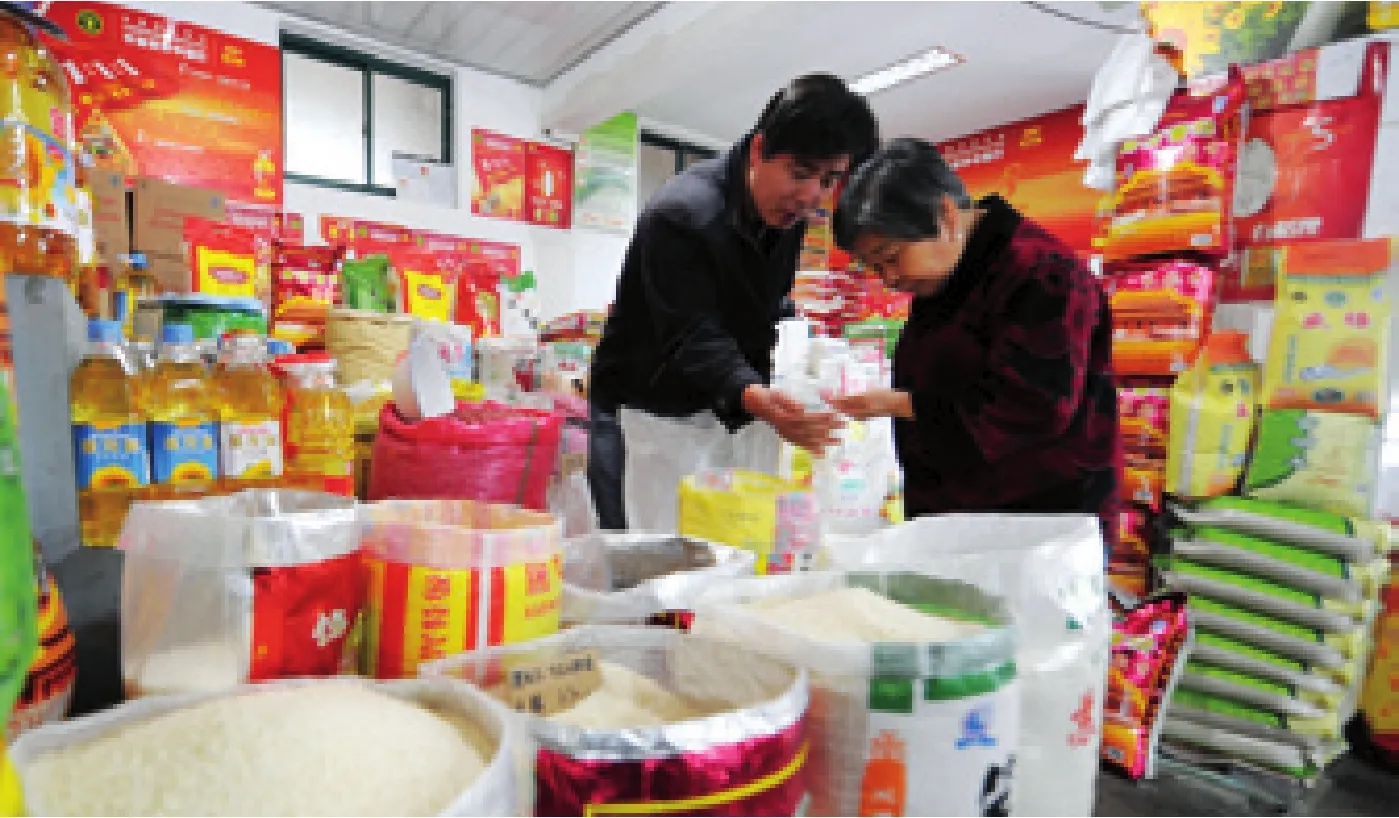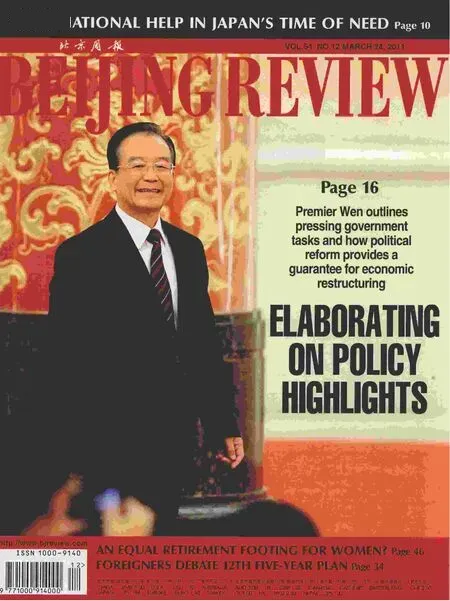The Killing Fields
By YIN PUMIN
The Killing Fields
By YIN PUMIN
Heavy metal pollution poses a serious threat to public health
Rich in mineral resources, Hunan Province in central China is known as “the land of nonferrous metals.”But in recent years, a series of lead poisoning cases and a recent report on “cadmium-tainted rice” have put heavy metal pollution there under the spotlight.
In 2010, more than 200 children in Chenzhou City were found with excessive lead levels in their blood due to pollution from the local mining industry. In 2009,more than 1,350 children in Wenping Township, Wugang City, were also diagnosed with the same problem due to pollution from a local smelting plant.
In 2006, cadmium contamination sickened 150 villagers in Zhuzhou’s Xinma Village and caused two deaths. Residents fi nally learned two samples of locally-grown rice used for laboratory tests contained 2.5 times the safe amounts of cadmium.
A string of heavy metal poisoning cases have also been reported in Shaanxi, Anhui,Guangdong, Sichuan, Fujian and Yunnan provinces and Guangxi Zhuang Autonomous Region.
An earlier sample study conducted by the Ministry of Environmental Protection found 36,000 hectares of 300,000 hectares of farmland tested were polluted with heavy metal.Another assessment showed up to 12 million tons of food is contaminated by heavy metal each year, creating a direct economic loss of 20 billion yuan ($2.93 billion).
Cadmium-tainted rice
In February, Beijing-basedCentury Weeklymagazine reported a survey made by Nanjing Agricultural University in 2007 found 10 percent of rice samples collected from markets contain excessive levels of cadmium.
Cadmium is a silver-white substance easily absorbed by rice. Long-term exposure to cadmium could lead to calcium loss in bones and kidney failure, according to Zhou Zijun,a professor at the School of Public Health of Peking University.
The findings came after a research team, led by Pan Genxing, a professor at Nanjing Agricultural University’s Institute of Resource, Ecosystem and Environment of Agriculture, tested samples of 91 varieties of rice collected from markets in six agricultural regions in China in 2007.
In April 2008, Pan led another research team to agricultural produce markets in Jiangxi, Hunan and Guangdong provinces,taking 63 samples. They found more than 60 percent of the rice samples were tainted with cadmium. In some samples, the cadmium levels are fi ve times the legal maximum.
In fact, early in 2002, a nationwide rice testing by the Ministry of Agriculture showed 28.4 percent of surveyed rice was contaminated with lead, and 10.3 percent with cadmium.
China, which produces and consumes more rice than any other country, grows nearly 200 million tons of rice a year.
TheCentury Weeklyreport says dozens of residents in Sidi Village in southwest China’s Guangxi, where cadmium pollution is heavy, are suspected of having the symptoms of itai-itai disease, which is characterized by pain in the joints and the spine.
The report cites statistics from the Guilin Institute of Technology showing the level of cadmium was 1.005 milligrams in every kg of locally-grown rice in 1986, fi ve times the standard amount.
Sidi’s situation is not particularly rare.Similar cases of itai-itai disease have been documented in other parts of China, including areas around the communities of Suichang and Wenzhou in eastern Zhejiang, where researchers found cadmium levels in rice paddies exceeding national limits by six times.
For a long time, the Xiangjiang River in Hunan has been known as one of China’s most polluted waterways.
“In some sections of the river, the heavy metal levels exceed national limits by several hundred times,” said Zhang Zhiguang, Director of the Division of Science and Technology of Hunan Provincial Environmental Protection Department. “You could just dredge the mud and process it in a re fi nery.”
In Zhuzhou’s Qingshuitang Industrial District, home to Zhuzhou Smelter Group Co. Ltd., the country’s largest zinc and lead producer, the monitoring agency found the concentration of cadmium, mercury and lead in local vegetables is almost 65 times, 186 times and 66 times the national safety standard for their content in food, respectively.
In fact, Zhuzhou is just one location along the Xiangjiang River that suffers from heavy metal pollution. Running from south to north, the river drains 95,000 square km and supplies drinking water for at least 20 million people.
Due to developed nonferrous metals mining and smelting industries, the cities of Hengyang,Xiangtan and Chenzhou are three other victims of pollution from nonferrous mining operations along the Xiangjiang River.
Zeng Xibai, a professor at the Institute of Environment and Sustainable Development in Agriculture of the Chinese Academy of Agricultural Sciences, conducted a study and found heavy metal from mining areas and smelting plants poses a more serious threat to nearby farming areas. The heavy metal content in plants and soils there was at least 10 times higher than normal croplands.
“Cadmium, arsenic and other heavy metals are often discharged with sewage by mining operations and make their way into rice paddies,” Zeng said.
He said once the land was polluted, it could take about 10 years to restore it to the original state. The restoration techniques involve adding healthy soil on top of polluted land and using chemicals or microscopic organisms to make the soil less toxic. “We still don’t have a very effective restoration technique,” Zeng said.


SAFETY FIRST: A buyer carefully chooses rice from a market in Hangzhou,east China’s Zhejiang Province, on October 21, 2010
Pan attributed the heavy metal pollution problem to China’s current land contract system and farmers’ self-supply of rice.
According to him, in Western countries,planting is done by farmers and large companies. Once the land is polluted, they may abandon it, while Chinese farmers have to bear the problem.
Also, Western countries usually ask the enterprises to pay funds for environmental protection and use the money to handle such problems, while the Chinese Government lacks such measures.
Also, he said, the lack of supervision allows the contaminated rice to make it to the market.
Steps taken
In order to tackle heavy metal pollution,the Ministry of Environmental Protection unveiled a long-awaited plan in February.
The plan was approved by the State Council, China’s cabinet, as part of the country’s 12th Five-Year Plan for National Social and Economic Development (2011-15).
The national plan set an emission-reduction target of 15 percent from the 2007 levels for five heavy metals in key polluted areas, said Environmental Protection Minister Zhou Shengxian at a televised conference. The metals are lead, mercury, chromium, cadmium and arsenic.
The fi rst national pollution census, which was published in 2010, shows China discharged 900 tons of the fi ve metals in 2007.More than 80 percent of the country’s rivers,lakes and reservoirs, 63 percent of its coastal waters and about 20 million hectares of land were contaminated.
The breakneck expansion of heavy metal industries, outdated technology and a lack of effective monitoring are cited as the main reasons for pollution.
“More than 30 major heavy metal poisoning incidents have occurred since 2009,posing a grave threat to public health, especially to children,” Zhou said.
The ministry listed 138 target zones in 14 provinces and regions, including Inner Mongolia Autonomous Region and Jiangsu and Zhejiang provinces.
A total of 4,452 enterprises, including nonferrous metal mines, smelters, lead-acid battery manufacturers, leather producers and those in the chemical industry, are listed as major monitoring targets.
The list was made after an intensive nationwide survey of more than 110,000 enterprises, conducted jointly by nine ministries at the end of 2010, according to Zhou.
Provincial governments are requested to work out their speci fi c plans and targets by the fi rst half of 2011. Local of fi cials who fail to enforce the targets will be held accountable.
Zhou estimated a total of 75 billion yuan($10.98 billion) over the next fi ve years would be needed to address heavy metal pollution.The Ministry of Environmental Protection said it would invest in research and development of technologies for cleaning up heavy metals already in soil and water.
Zhou said tackling violations by battery manufacturers will be a major focus this year.
In the latest case in January, more than 200 children were found with excessive concentrations of lead in their blood in Huaining County, Anhui, the result of emissions from a nearby battery factory.
“Our investigation shows the enterprise faked environmental review documents, and the local government’s lax monitoring was also to blame,” Zhou said.
As a punishment, the ministry has suspended approval for any new projects involving heavy metal in Anqing City, which administers Huaining.
Appropriate systems for heavy metal pollution prevention, emergency response and environmental and health risk assessment would be in place by the year 2015, in order to resolve prominent issues putting the public’s health at risk, Zhou said.
Meanwhile, local governments also vowed to take measures to solve heavy metal pollution.
At Hunan’s 2011 Provincial Environmental Protection Work Meeting in late February, of fi cials said over the next fi ve years, 100 billion yuan ($14.64 billion)would be invested in environmental protection efforts in the province. Of that amount,more than 56 billion yuan ($8.2 billion)would go toward a concentrated effort to reduce heavy metal contamination.
The remediation plan for the Xiangjiang River was included in Hunan’s 12th Five-Year Plan.
Anhui also pledged to take measures to crackdown on polluting enterprises.
“Enterprises like battery plants, which are prone to cause water pollution, will be shut down if they are not up to emission standards,” said Miao Xuegang, Director of Anhui Provincial Environmental Protection Department, on March 9.
Furthermore, environmental authorities at provincial or prefecture levels will be responsible for monitoring enterprises and projects for heavy metal pollution, Miao said. That power used to be with lower-level governments.
According to Miao, more than 60 percent of enterprises discharging lead wastes in Anhui are not in conformity with required standards,which have put people’s health at high risk.
“We must put in place a sound mechanism and strengthen supervision of projects that might affect people’s health,” Miao said.
China has set an emission-reduction target of 15 percent from the 2007 levels for five heavy metals in key polluted areas,including lead, mercury,chromium, cadmium and arsenic

